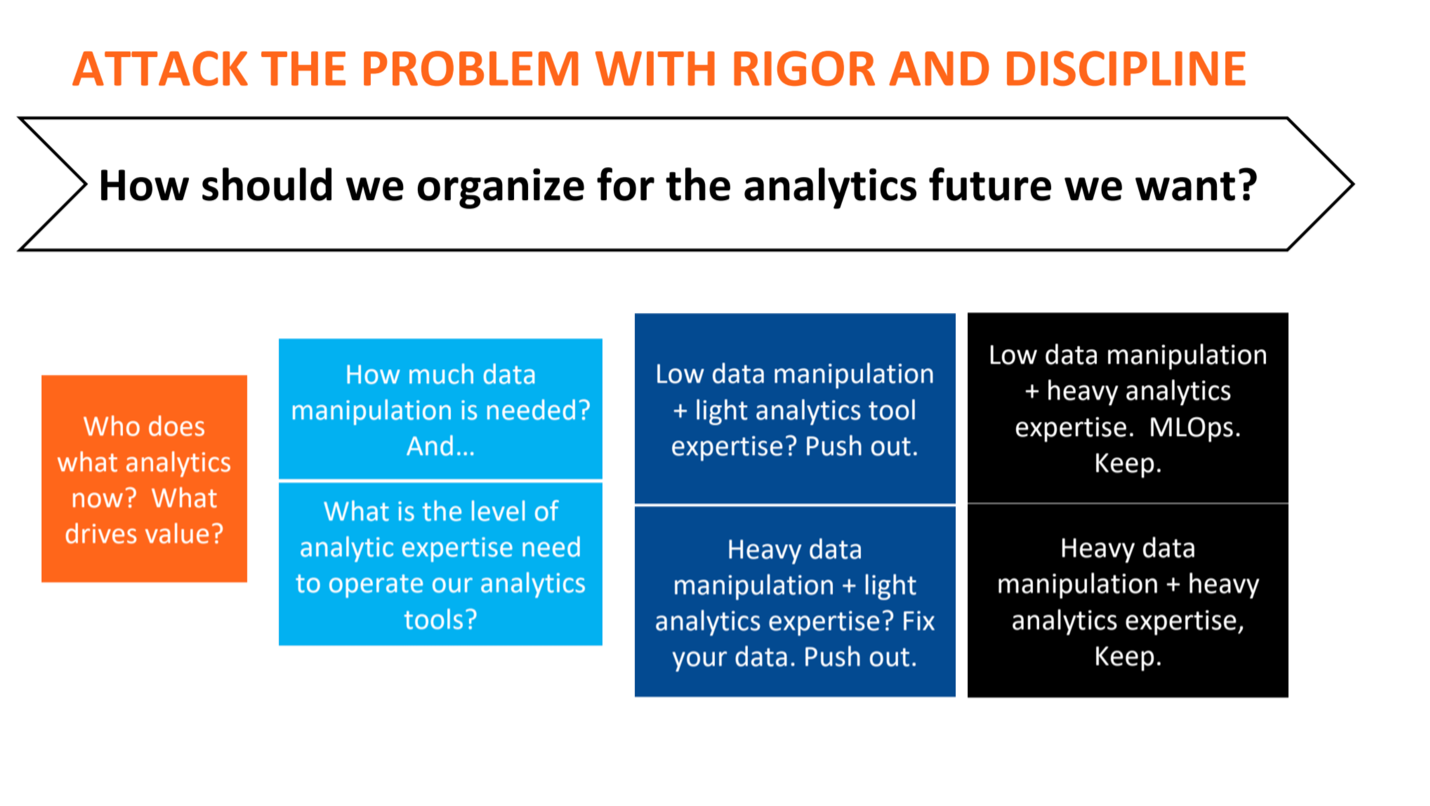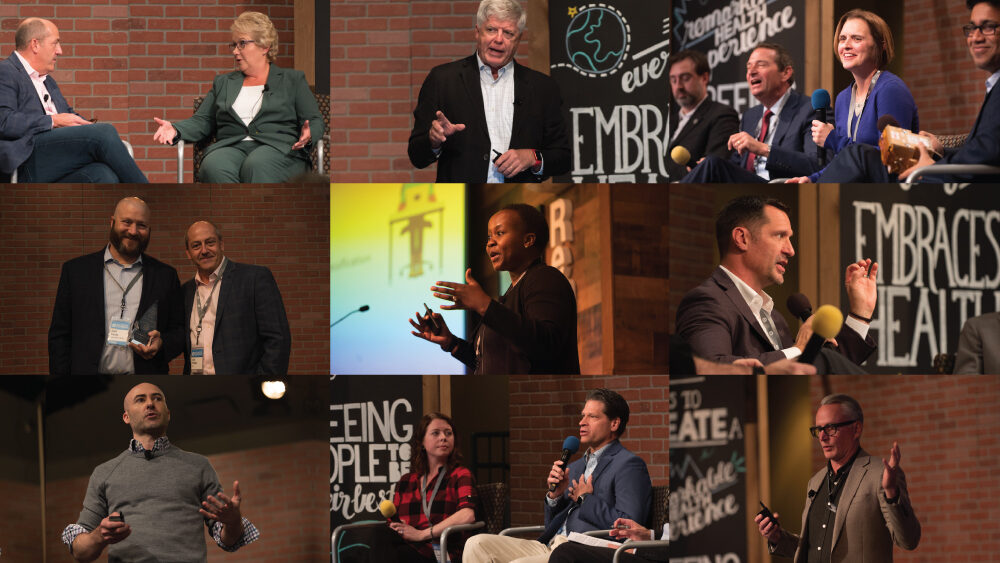
Before you marinate on the many aha’s at Symposium, we’d be ever appreciative if you took one minute to complete this pulse survey on 2023 in-person gatherings. We will share this data back to the community in a December blog – thank you!
IIA partnered with Highmark Health for our first in-person Symposium in three years! On October 12-13, 2022, we brought together some of the top advanced analytics teams to hear from the brightest minds in data analytics. Symposium speakers left the crowd inspired as they learned about dramatic shifts we’ve seen over the past year, and how current advanced analytics teams and practitioners across various industries are operationalizing the support they are receiving from IIA to meet the demanding nature of these times.
Before we dive into key themes and takeaways, IIA would like to extend a big thank you to Highmark Health for hosting and supporting Symposium at their wonderful headquarters in Pittsburgh. It was such a joy working with the Highmark team!
IIA’s Analytics Symposium is an exclusive, vendor-free conference, allowing analytics leaders and their teams to learn from each other, uninterrupted.
Symposium Themes
The agenda for Symposium was crafted to inform and inspire attendees and is free from vendor influence. Leading analytics thought leaders, researchers, and executives shared their insights and real-world experience on AI, integrating IoT and ML, data governance, transitioning analytics workloads to the cloud, and developing and leading effective analytics teams.
Theme 1: AI/ML adoption is increasing at a rapid clip and legacy enterprises are seeing real results
Theme 2: As the pandemic eases its grip on society, D&A teams are back to strategy and prepared to play “offense” in volatile environments
Theme 3: A key pillar of corporate responsibility is mitigating bias and promoting fairness in analytics
Welcome Address with Karen Hanlon, COO, Highmark Health

Jack Phillips, CEO at IIA and Karen Hanlon discuss her perspective on the importance of data and analytics to the business and her advice on forging partnerships across the enterprise.
- While slow to the table, the healthcare industry is now firmly on the journey toward analytics maturity. From Hanlon’s perspective, data and analytics run the business and is core to implementing their strategy as Highmark creates more proactive, personalized, and simplified experiences, from patient to doctor to caregiver.
- The biggest change we’ll experience in the healthcare space will be around consumerism, and engagement of the customer in a more proactive way.
- If you have a data scientist doing the same thing one year from now that they're doing today, then you’ve missed the mark. You’ve missed the ability to take something and put it into the hands of the business owner – and get it out of the hands of that data scientist. You need that data scientist focused on the next big thing.
AI Today (and Tomorrow): Changing the Way We Work
Speaker: Tom Davenport, Co-Founder and Advisor, IIA
Far from the stuff of futuristic speculation, AI in the workplace is happening here and now. Tom Davenport has had an illustrious career researching enterprise analytics and AI and his latest book showcases some of the most vivid examples of how AI is taking over tasks to free people to do more important and challenging work.
- The number one thing that AI is doing these days – and machine learning in particular – is predicting the future based on the past. Of course, we leave it to the humans to decide: Is the past a good guide to the future? Sometimes it is, but not always.
- If we pursue augmentation, rather than just automation, we can get capability and intelligence levels higher than the machine alone or the human alone.
- Given the fact that most applications for AI systems impact entry-level work, it does raise the issue: How do we get the experts of the future if we no longer hire entry-level people?
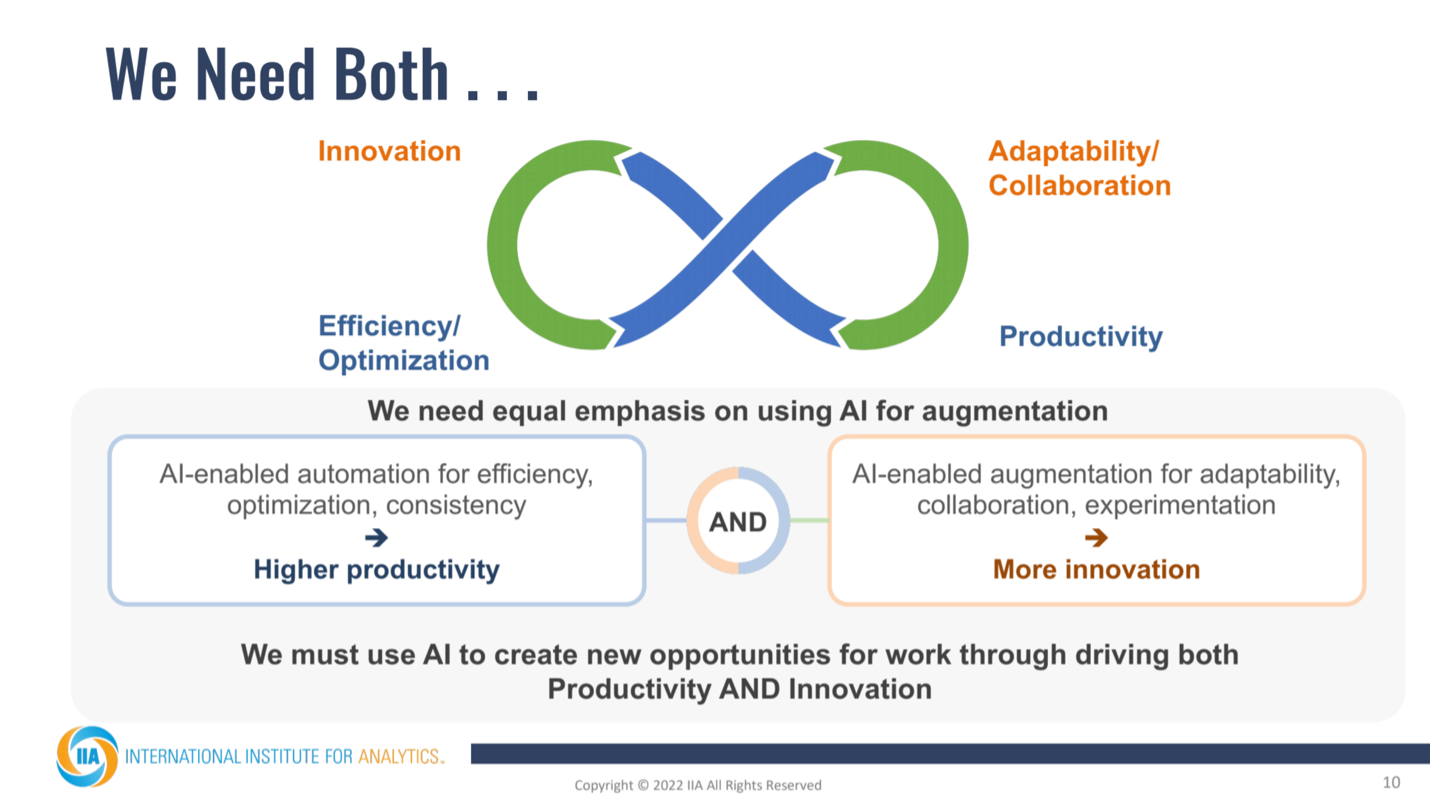
Linking IoT with AI: From the International Space Station to Pediatric Medicine
Speakers: Christopher Martin, Director, Bosch Institute; Samarjit Das, Principal Researcher, Senior Manager, Bosch; Kelly Shields, PhD, Senior Research Data Scientist, Highmark Health; Joseph Aracri, DO, System Chair of Pediatric, Highmark Health

Bosch is known for its innovations in connectivity and this strategic focus has culminated into the intersection of IoT and AI. Combining these two technologies enables new business models, better products, and smarter solutions for individuals and society as a whole. Case in point: In a unique collaboration between Bosch and Highmark Health, sensing technology used by NASA is now being applied in research to better diagnose pediatric pulmonary conditions.
- The Bosch and Highmark Health collaboration is taking AI research to the next level. Instead of focusing on things like speech recognition (a well-worn field of AI study at this point), the team is exploring how AI can discover audio anomalies in the human body at extremely low frequencies, even sub-hertz level. In turn, this research has the potential to transform the relationship between IoT and AI technologies across industries.
- The Bosch and Highmark teams have had tremendous success “distilling down the ocean and focusing on a particular path going forward.” A project manager brings the teams together for brainstorming and discovery sessions, helping the teams to gel and identify key stakeholders. Through idea clustering and team voting, they find very focused use cases to devote their time and energy.
- Hybrid AI models are making it possible to build frameworks for generalizable applications. With these frameworks, you can accommodate for domain-specific physics or space domain knowledge for different machines and integrate into your machine learning systems. AI research is progressing in terms of hybrid modeling tasks.
2022 ANNY Excellence in Analytics Awards
The ANNY Award recognizes organizations that have done an outstanding job implementing impactful analytics at scale. Several dozen nominations were received, and three finalists were selected by IIA based on five criteria:
1. Outcomes - There must be evidence of measurable success, where the business changed in a meaningful way based on the result of an analytics project.
2. Ambition - It is important to try something new and different; to push the envelope.
3. Scale - Scaling a specific program to an enterprise level is needed.
4. Skills - The business must have developed skills that enabled end users, business people, to use analytics and learn to make decisions.
5. Insights - Did the analytics program produce cool insights and interesting findings?
The winner of the 2022 ANNY: Echo Global Logistics - Digital Freight Marketplace program
The goal of Echo's project was to accurately predict market rates for a given truckload, aka a "touchless quote," via their proprietary algorithm. On an annual basis, Echo are utilizing about 7.6M data points per year to formulate their algorithmic truckload costs. The project has gone through four different iterations before landing on their current one:
- Version 1: Weighted averaging of a hierarchical, market to market partial pooling model of individual buyers
- Version 2: Market to Market Deep Convolutional Neural Network
- Version 3: Market to Market Bayesian Hierarchical model
- Version 4: Geographic mesh with SPDE (stochastic partial differential equation) and INLA (integrated nested Laplace approximation)
Echo's cumulative revenue and touchless quote volume has increased by more than 5 times since deploying version 4 of their program, reaching a peak of ~$110 million revenue via the touchless quotes.
“We‘re grateful to be honored by IIA with this year’s ANNY award for our Digital Freight Marketplace program," said Scott Friesen, EVP of Strategic Analytics at Echo Global Logistics. “This work has had a profound impact on Echo’s internal stakeholder groups. I’m so proud of our Data Science team for their dedicated work and pursuit of the digital transformation of the supply chain industry."

The other two ANNY finalists were:
Highmark Health - AHN Appointment Match
Highmark's project focused on the topic of scheduling patient appointments, specifically in the oncology department. Prior to the project, scheduling patient appointments was handled separately by each infusion clinic and each individual patient. This often lead to inefficiencies in patient wait and stay times. Approximately 5,000 appointments were analyzed by Highmark's appointment match algorithm which then produced a tailored appointment suggestion system. This system led to a significant decrease in the wait times and stay times for oncology patients.
TE Connectivity - Customer Churn
Analytics
TE Connectivity sought to proactively identify and mitigate customers from churning through an extended sales and analytics collaboration. The analytics team did this by: identifying significance of customer dissatisfaction, utilizing an ML model to provide insights into high-risk customers, and analyzing dissatisfaction reasons that could be ameliorated before potential churn. The TE Connectivity team was able to save $50.6M+ through churn mitigation over 2021 and 2022.
Transitioning Analytics Workloads to the Cloud
Speakers: Richard Clarke, CAO, Highmark Health; Malcom Postings, Head of Living Health Dynamic Platform, Highmark Health; Brian Sampsel, VP, Analytics Strategy, IIA
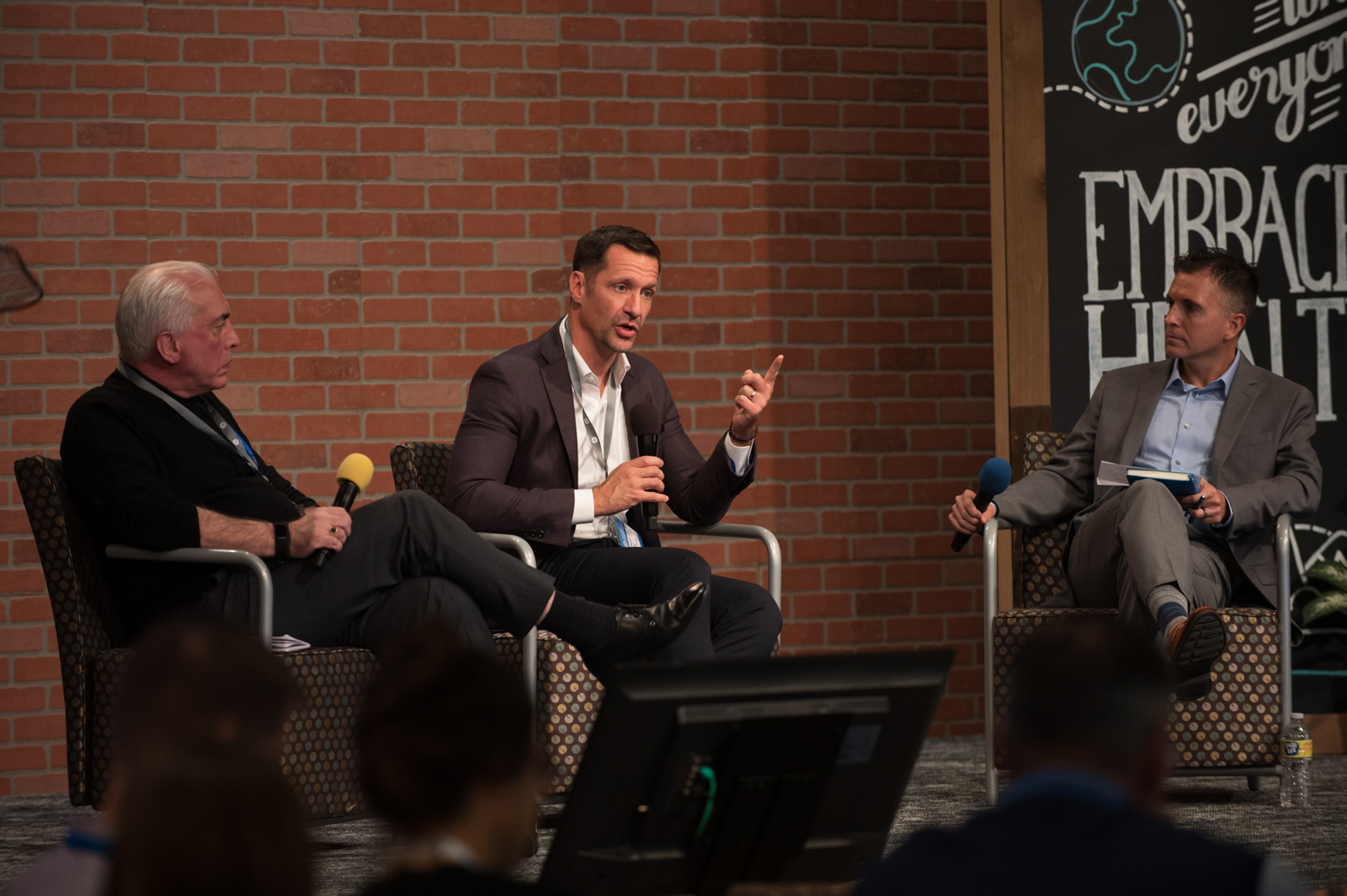
For faster, scalable insights most legacy enterprises are making the move to the cloud. And there’s two forks in the road you can take on this journey: Is the technology powering your strategy or is the strategy powering your technology? Richard Clarke and team chose the latter with their Highmark Living Health strategy – a critical decision that has influenced the organization’s ability to be more proactive, precise, and personalized with their customers.
- As you integrate AI into your cloud strategy/platform for predictive analytics, optimization, and automation, consider the impact on the end-user. For example, doctors won’t do anything with 70 nudges about a patient. Sometimes less is more.
- When vetting cloud providers, seriously consider their “partner mindset.” You want to work with a company that not only can execute on your vision but can help change the culture at your organization. Transitioning to the cloud means working differently, funding things differently, approaching products differently, and you’ll want a cloud partner (or partners) who will engage in that way.
- While the technologies behind cloud platforms can indeed fuel the business, the major transformation comes in how the enterprise begins to work cross-functionally in parallel with faster adoption of advanced analytics.
Bias in Analytics: Three Mitigation Strategies to Adopt Today
Speakers: Shingai Manjengwa, Director, Technical Education, Vector Institute for Artificial Intelligence; Founder, Fireside Analytics
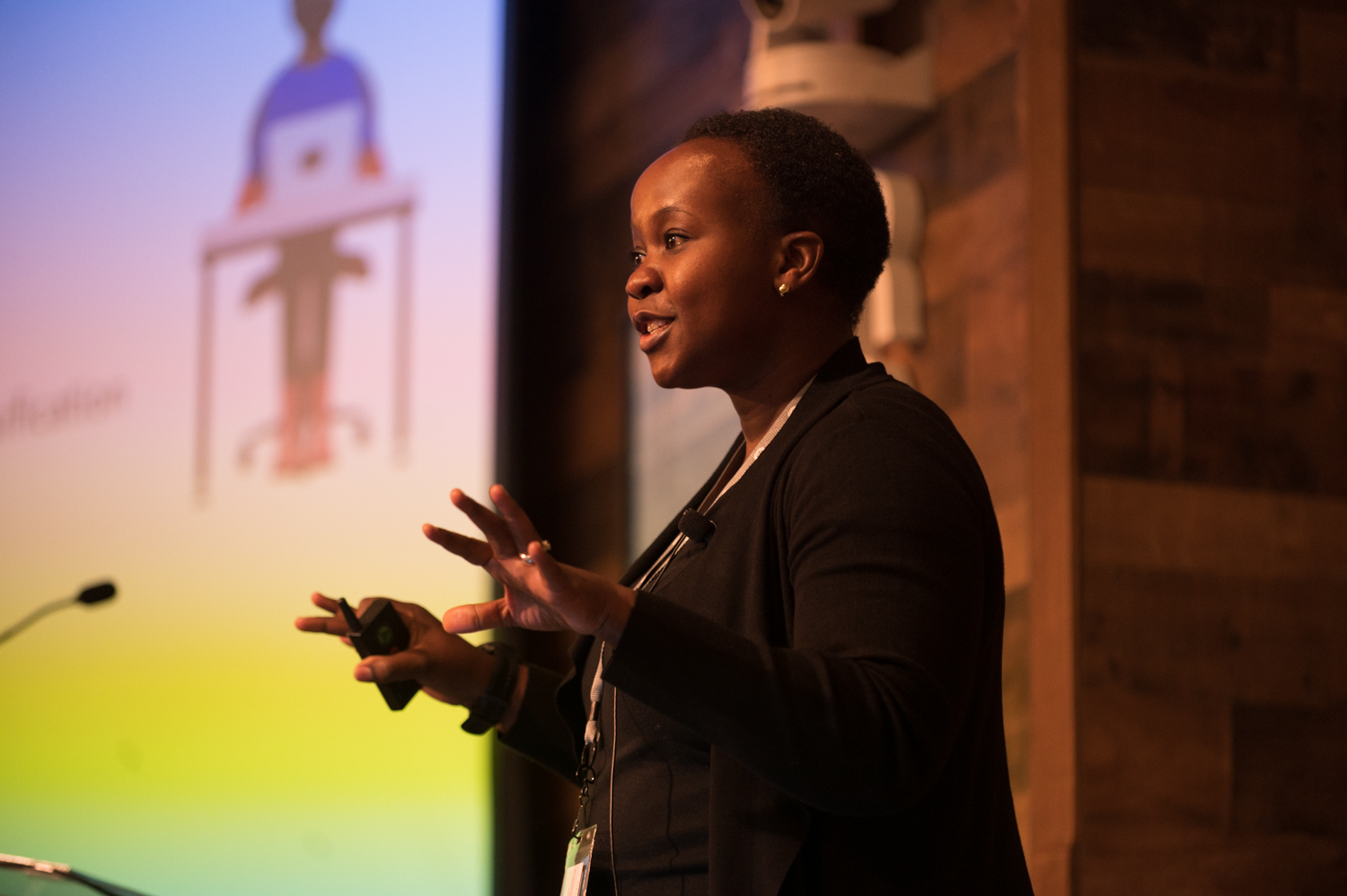
With recent advancements in analytics and AI, it’s safe to say the technology is coming of age. But with this progress comes ethical considerations and corporate responsibility. Does your organization recognize data bias exists, in the data itself and the people analyzing or using it? How are you mitigating bias at every stage of the data and analytics process – from data capture to running machine learning systems?
- While morality is the highest of our ideals, it’s impossible to enforce. Likewise, in an ideal world, we’d never have to force the masses to act a certain way or litigate anything. This is why taking an ethical approach to bias is the most fruitful: a localized, agreed upon set of principles based on values.
- Focus on harm reduction when you think about bias. Why? Because you can get lost in things like exclusion, people, process, technology, and segmentation. Try to narrow your thinking and actions in how to reduce harm as it pertains to analytics bias.
- Where does bias occur? It occurs everywhere – in the engineering, in the value creation, in the objectives we set as an organization. People act on objectives. They will come up with solutions based on the objectives you set, so we have to think more broadly about objective setting and the unintended consequences that may arise based on how we’re driving our organizations forward.
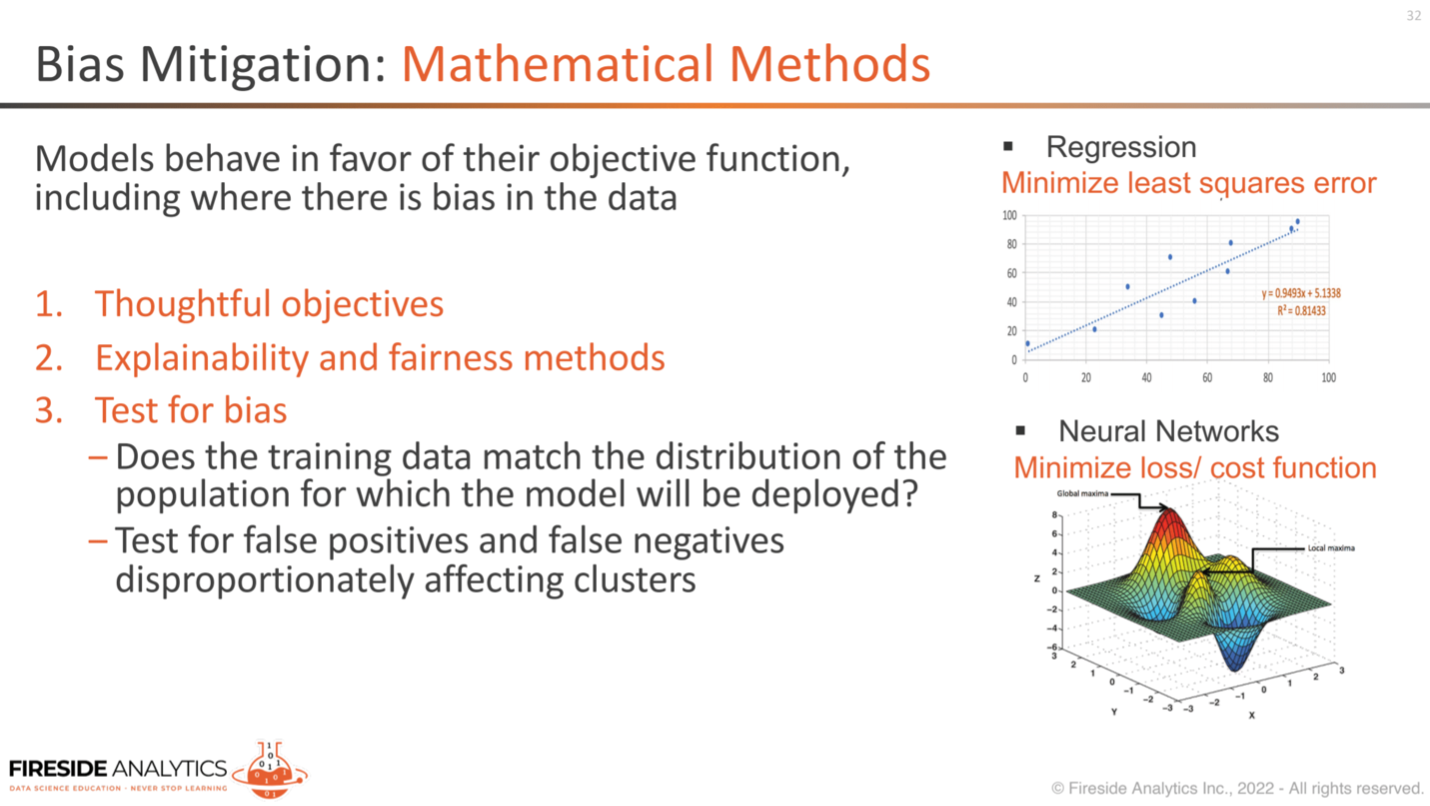
Building an Analytics Organization to Elevate Your Team
Speaker: Brandon Southern, Senior Manager, BI, Last Mile Safety and Performance, Amazon
To deliver world-class results while growing and retaining talent, the proper foundation of tools, practices, and leadership will be required. Brandon Southern has architected analytics environments for multiple organizations throughout his career and shows how and why it is important to incorporate standard software development, quality assurance, and project management practices into the analytics landscape.
- Only 32% of business analysts have a degree in tech or engineering, and only 10% have a degree in computer science. Contrast this with 88% of software developers holding an engineering or technical degree and you can see the wide gap – and source of frustration – between stakeholders and the analysts themselves.
- As leaders, if we’re building the right structures and processes, we’re supercharging team development (as well as employee satisfaction and talent retention). Set up an environment where you team is not chasing red herrings and key stakeholders aren’t stomping on their feet.
- Make sure you have an individual on each team you’re working with to be as passionate as you are about data and analytics because they’re going to hold the rest of the team members accountable.
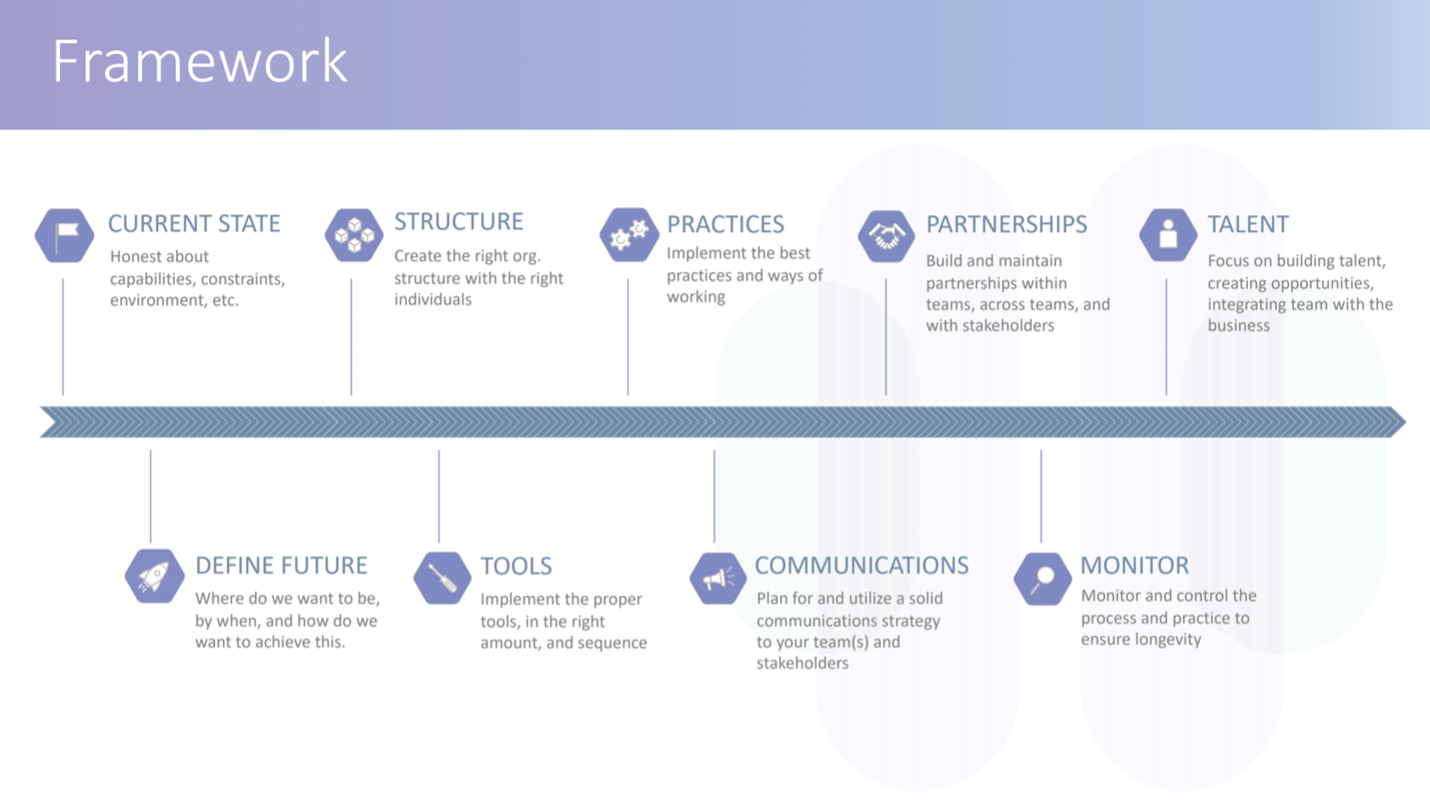
Data Analytics Strategies and Disruption
Speakers: Tuell Green, Managing Director, Operations Research & Advanced Analytics, American Airlines; Liz Marsh, Director of Data & Analytics Product & Design, DICK’s Sporting Goods; Keith Moody, Senior Director, Analytics and Business Intelligence, Discount Tire; Bill Franks, CAO, IIA
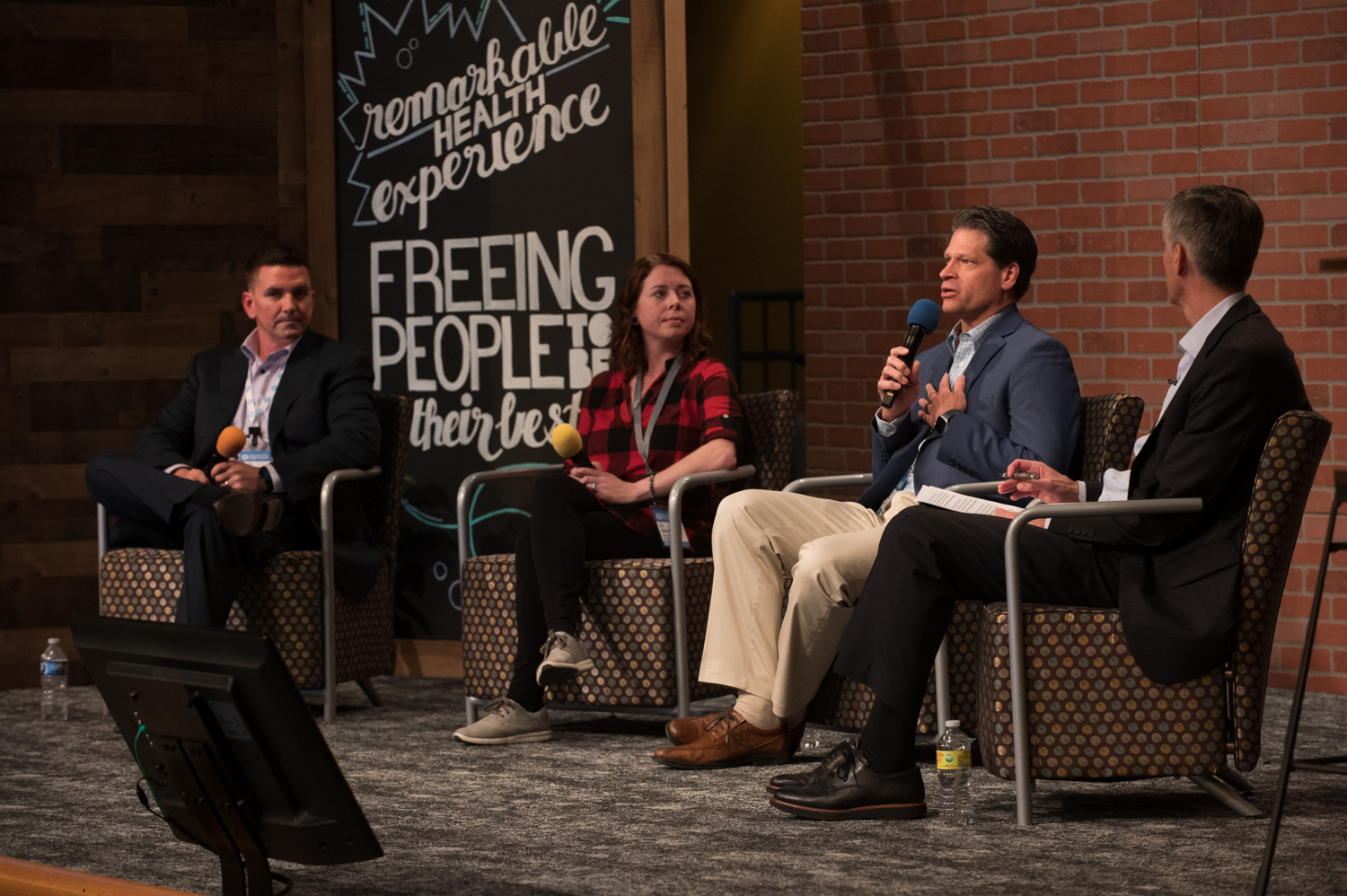
If there was any doubt, the past two-plus years has cemented the tangible impact and future promise of enterprise analytics. But how do the best data and analytics leaders adapt to disruption and, more importantly, navigate the growing demand for analytical insights? How do you proactively tackle volatility and evolve models and processes for built-in uncertainties?
- Fundamentally changing how you deal with data in your organization and shifting to a customer-centric approach allows you to “play offense” and build new data platforms, new data products, and deliver quick data-driven decisions.
- To handle the increase in demand, recognize that you can truly only influence your team and do so much with the resources you have and, through community practice, begin to develop other analysts across the organization to help meet demand.
- When tackling data literacy, the most important thing to plan for and understand is not every business domain is at the same place, nor should they be. Meet your business units where they are and provide the upskilling they need relative to their business goals and activities.
Organizing Analytics and Data Science: Are You Stuck in Your Comfort Zone?
Speaker: Drew Smith, VP of Global Data and Analytics, Little Caesar Enterprises
While it’s natural for large non-digital firms progressing in analytics capability to adopt a semi-centralized or centralized analytics function, most confront the truth that they need to move toward a hub and spoke model if they ever wish to become truly data-driven. But this journey along the continuum of organizing models can be a painful reckoning for the business.
- The reality is if you are in a large analytics organization, you will be centralized at some point, and you’ll have to make a choice about the things you put into a centralized function. If you’re wondering whether a task should be centralized or in a hybrid or hub-and-spoke structure, think about how much leveling you’ll have to do with this person for them to understand the concept you’re talking about.
- Your model is changing and evolving. As an analytics leader, you need to be connected to your people so you understand where it might be pulled away from you. Even if you’re centralized, and you hold on to all the data, watch out for that. Be involved and get close to people, and you can affect change.
- You’re going to be hybrid. Central question: How active do you want to be in the selection of what gets taken out of your organization? That’s not a negative thing, because what you’re really asking is how do you want what you deliver today to be different than what you deliver tomorrow, assuming that you want to continue to deliver maximum value tomorrow but with different preconditions.
